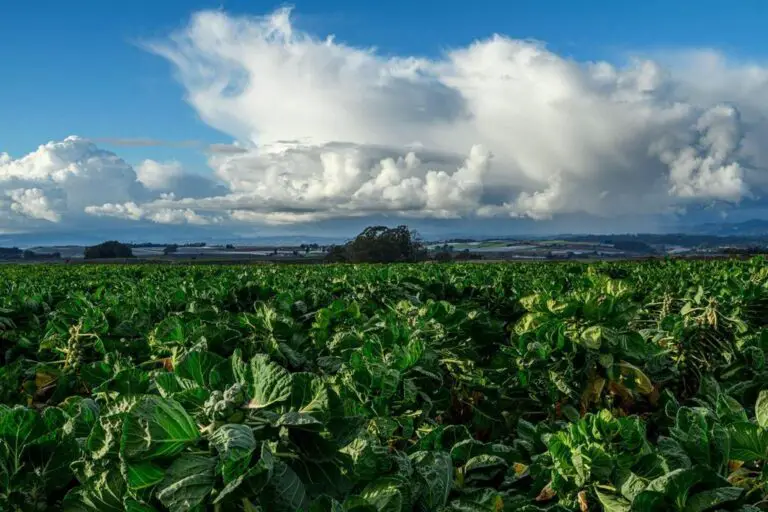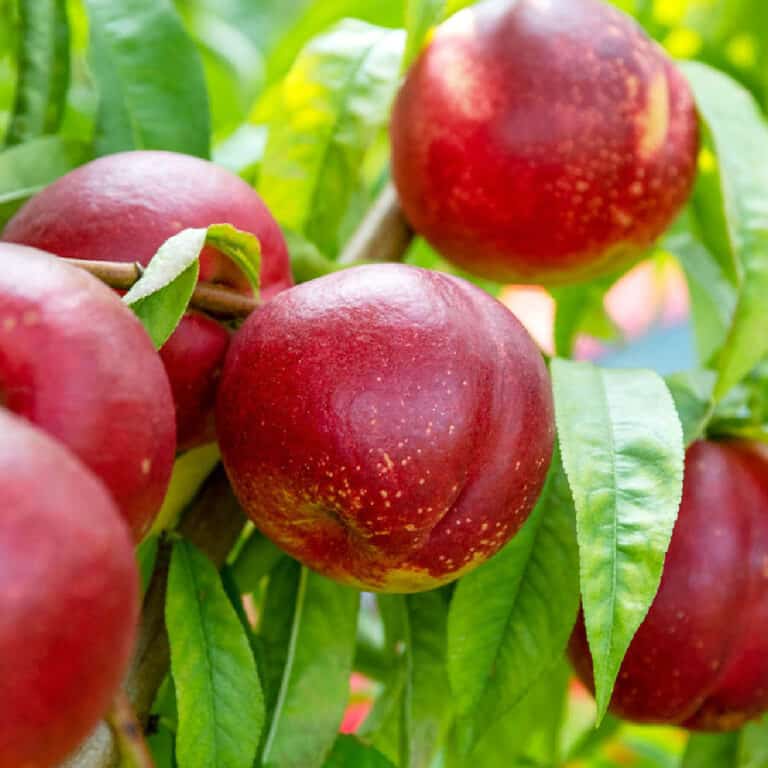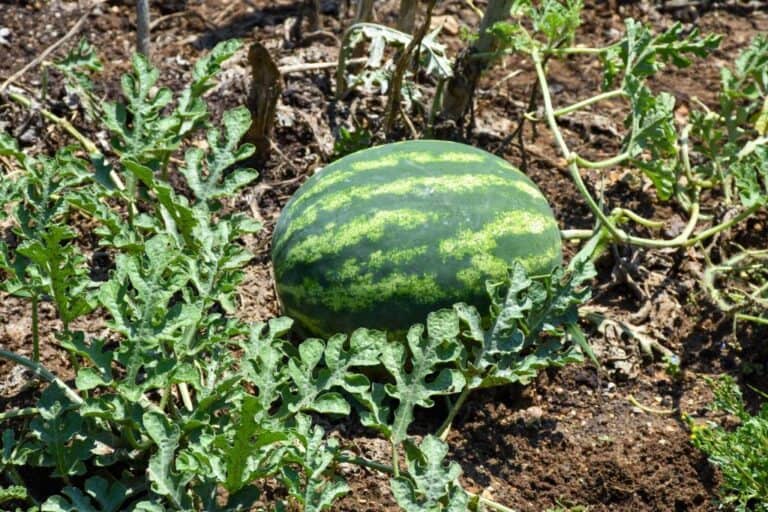Can Broccoli Plants survive Freezing Temperatures (Frost Resistance)?
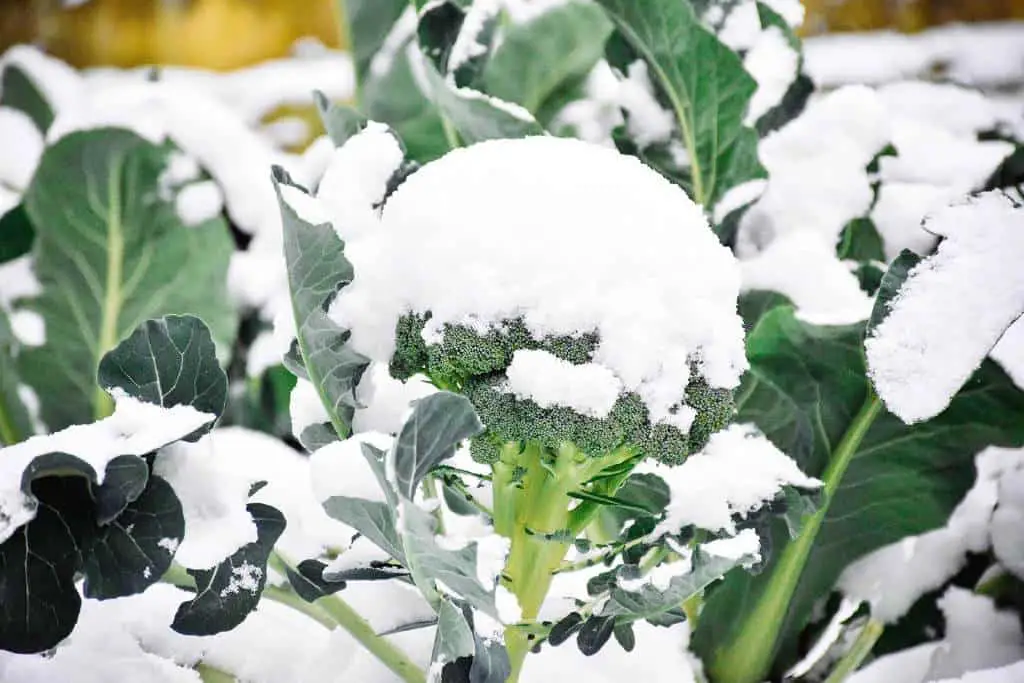
When it comes to gardening and cultivating our favorite vegetables, understanding their resilience to different weather conditions is crucial. Broccoli, with its crisp florets and numerous health benefits, is a beloved addition to many gardens and dinner tables.
However, as winter arrives with its freezing temperatures, a common question arises: Can broccoli plants survive these icy conditions?
In this article, we embark on a journey to explore the frost resistance of broccoli plants. We’ll uncover the physiological and biochemical mechanisms that enable these plants to withstand freezing temperatures.
By understanding the factors that affect their frost resistance, we can optimize their cultivation and ensure a successful harvest. Prepare to be amazed by nature’s remarkable adaptations and learn how to ensure your broccoli thrives even in the coldest of climates.
Can Broccoli Plants Survive Freezing Temperatures (Frost Resistance)?
Yes, broccoli plants are frost-resistant and can tolerate temperatures as low as 26 degrees Fahrenheit (-3 degrees Celsius). Broccoli is considered a cold-tolerant vegetable and does best in cool conditions with temperatures between 60 and 70 degrees Fahrenheit (16-21 degrees Celsius).
However, sudden heat waves or sudden freezes can damage the plant, so it’s essential to allow the transplants to acclimate gradually to outdoor temperatures.
If the temperature drops to 28 degrees Fahrenheit (-2 degrees Celsius), hardened-off transplants will not be seriously damaged. If temperatures are likely to get colder or last longer, you need to provide the plants with some broccoli plant protection.
The broccoli heads are much more frost-sensitive than the actual plants, and frost damage causes the florets to get mushy. If this happens, cut off the head but leave the plant in the ground, and you will likely get some side shoots
Understanding Frost Resistance in Plants
Before delving into the frost resistance of broccoli plants, let’s grasp the concept itself. Frost resistance refers to a plant’s ability to withstand and survive freezing temperatures without sustaining significant damage. It involves a complex interplay of physiological and biochemical adaptations that protect the plant’s cells and tissues from the detrimental effects of the cold.
Frost occurs when the temperature drops below the freezing point (0°C or 32°F), causing the moisture in the air to condense and freeze onto surfaces, including plants.
When plants are exposed to freezing temperatures, the water inside their cells can freeze and expand, resulting in cellular damage. This damage can disrupt the plant’s vital functions, leading to tissue injury, wilting, and ultimately, plant death.
Different plant species exhibit varying degrees of frost resistance, with some better equipped to withstand freezing temperatures than others. Understanding the mechanisms behind frost resistance is crucial for gardeners and farmers aiming to cultivate broccoli successfully in regions prone to frost.
Broccoli’s Resilience and Adaptability
Despite their moderate frost resistance, broccoli plants can exhibit remarkable resilience and adaptability. In regions with cold winters, gardeners often start broccoli indoors and transplant broccoli seedlings outdoors in the early spring. This allows the plants to establish themselves before the arrival of frost-prone conditions.
Additionally, in milder climates, where freezing temperatures are less common, broccoli can be grown as a fall or winter crop. By carefully selecting cold-tolerant varieties and implementing protective measures, gardeners can extend the growing season and enjoy fresh broccoli well into the colder months.
Broccoli Plants: Anatomy and Physiology
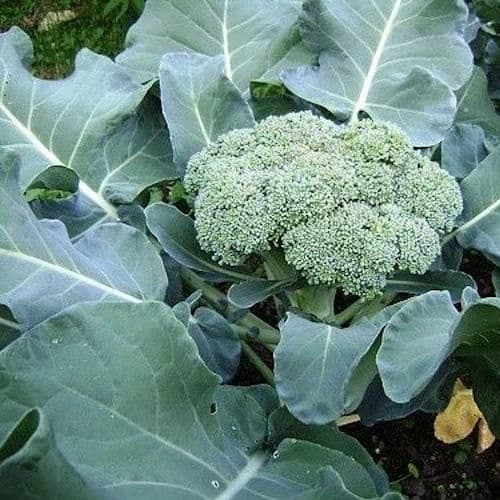
To comprehend how broccoli plants handle freezing temperatures, it’s essential to explore their anatomy and physiology. Broccoli, scientifically known as Brassica oleracea, possesses specific structures and tissues that contribute to its frost resistance.
The outer layers of the plant, including the epidermis and periderm, act as barriers against cold air and help reduce water loss. The internal tissues, such as the xylem and phloem, transport water and nutrients throughout the plant, playing a crucial role in its survival during frost.
When faced with freezing temperatures, broccoli plants employ various physiological responses. These include the closure of stomata to minimize water loss, changes in cellular membrane composition to maintain fluidity, and the production of specific proteins to protect against ice formation within the cells.
This vegetable exhibits a remarkable degree of cold hardiness, which refers to a plant’s ability to withstand and survive freezing temperatures.
While different broccoli varieties may display slight variations in their cold hardiness, most types are considered moderately frost-resistant. This means they can tolerate light frosts, usually down to temperatures around 26°F (-3°C) for a brief period without sustaining significant damage.
Factors Affecting Frost Resistance in Broccoli Plants
Numerous genetic and environmental factors affect the frost resistance of broccoli plants. Understanding these factors allows us to make informed decisions when selecting broccoli cultivars and optimizing growing conditions.
Several factors influence a broccoli plant’s ability to withstand freezing temperatures. These include:
- Variety Selection: Certain broccoli cultivars are specifically bred for enhanced frost resistance. When choosing seeds or seedlings, look for varieties known for their cold tolerance, such as ‘Green Goliath’ or ‘Waltham 29.’
- Plant Maturity: Mature broccoli plants are generally harder than young, tender ones. Well-established plants have stronger cellular structures, making them more resilient against frost damage.
- Acclimation: Gradual exposure to colder temperatures can help broccoli plants acclimate and become more resistant to frost. Gradually lowering the temperature in your growing environment before winter sets in can bolster their cold tolerance.
- Cultural Practices: Providing optimal care throughout the growing season can enhance the plant’s overall health and resilience. Proper watering, fertilization, and pest control can contribute to a robust broccoli plant that can better withstand freezing temperatures.
Effects of Freezing Temperatures on Broccoli Plants
When exposed to freezing temperatures, broccoli plants can suffer significant damage. The chilling cold can wreak havoc on their delicate tissues and organs. The effects of freezing temperatures on broccoli plants include:
- Cellular Damage: Ice crystals form within the plant cells, leading to ruptured cell walls and irreversible damage.
- Tissue Injury: Specific plant tissues and organs, such as the leaves, stems, and flower buds, are particularly vulnerable to frost damage.
- Reduced Yield and Quality: Frost injury can diminish the overall yield of the broccoli crop and compromise its quality, affecting the taste and texture of the harvested florets.
Understanding the potential consequences of frost injury on broccoli plants is vital for implementing effective measures to protect them.
Breeding for Frost Resistance in Broccoli Plants
The development of broccoli varieties with enhanced frost resistance is an ongoing endeavor in plant breeding programs. Through careful selection and crossbreeding, breeders aim to create cultivars that can withstand freezing temperatures more effectively. Key aspects of breeding for frost resistance in broccoli include:
- Genetic Diversity: Ensuring genetic diversity in breeding programs is crucial for incorporating desirable traits, including frost resistance, into new broccoli varieties.
- Field Trials and Evaluation: Breeders conduct extensive field trials to evaluate the performance of potential frost-resistant broccoli varieties under freezing conditions.
- Molecular Techniques: Advancements in molecular techniques enable breeders to identify genetic markers associated with frost resistance and facilitate targeted breeding efforts.
Continuous research and breeding efforts hold promise for the development of broccoli plants with improved frost resistance.
Protecting Broccoli Plants from Frost
While broccoli plants have some degree of frost resistance, protecting them during periods of extreme cold is crucial for ensuring their survival and maximizing yield. Here are some effective methods to safeguard your broccoli from frost damage:
- Covering: Use protective coverings like row covers, frost blankets, or cloths to shield your broccoli plants from direct contact with frosty air. These coverings trap heat radiated from the ground, creating a microclimate that aids in keeping the plants warm.
- Mulching: Apply a layer of organic mulch around the base of your broccoli plants. Mulch acts as insulation, preserving soil warmth and shielding the plant’s root system from freezing temperatures.
- Watering Techniques: Watering your broccoli plants before an expected frost can provide some protection. Moist soil retains heat better than dry soil, helping to moderate temperature fluctuations and prevent frost damage.
- Location Selection: When planning your garden, consider planting broccoli in areas with natural protection, such as near a wall, fence, or larger plants. These structures can provide some shelter and reduce the direct impact of frost.
Harvesting in Cold Weather
If you’re faced with freezing temperatures but your broccoli plants are still growing and haven’t suffered severe frost damage, you may wonder if it’s possible to harvest them during the cold weather. The good news is that broccoli can often be harvested even in chilly conditions, provided you take certain precautions:
- Timing: Try to harvest broccoli during the warmest part of the day when the temperatures are slightly higher. This can help minimize the shock to the plants and reduce the risk of further damage.
- Gentle Handling: Be extra careful when harvesting broccoli in cold weather. Frozen plant tissues can become brittle and more prone to damage. Use sharp, clean tools to cut the broccoli heads cleanly and avoid unnecessary handling or rough treatment.
- Inspect for Damage: Before harvesting, carefully examine the plants for any signs of frost damage. Discolored, mushy, or wilted foliage may indicate tissue injury. If the damage is extensive, it’s best to leave the plant and wait for better conditions.
- Post-Harvest Storage: After harvesting, promptly store your broccoli in a cool environment, ideally around 32°F (0°C). This helps maintain its freshness and quality. If you’re harvesting during freezing temperatures, bring the harvested heads indoors immediately to prevent further exposure to cold.
Conclusion
In summary, while broccoli plants are not impervious to freezing temperatures, they possess a degree of frost resistance and can survive light frosts without significant damage. By choosing cold-tolerant varieties, providing proper care, and employing protective measures like covering, mulching, and strategic planting, you can enhance the plants’ ability to withstand freezing conditions.
Remember to be cautious when harvesting broccoli during cold weather, ensuring gentle handling and inspecting for frost damage. With the right techniques and precautions, you can enjoy the nutritional benefits of homegrown broccoli even in chilly climates.
So, if you’re eager to grow broccoli in your garden but worried about freezing temperatures, rest assured that with the right approach and a touch of care, these resilient plants can thrive and provide you with a bountiful harvest. Happy gardening!
FAQs
Can I grow broccoli in cold climates?
Yes, broccoli can be grown in cold climates. In fact, it is a cool-season crop and can tolerate light frost. It is ideal to start broccoli indoors or in a greenhouse and then transplant the seedlings into the garden when the weather has warmed up a bit.
How long can broccoli survive in freezing temperatures?
Broccoli can survive freezing temperatures for a short period of time, usually a few hours, without significant damage. However, prolonged exposure to freezing temperatures can severely damage or kill the plant. It is important to take measures to protect broccoli during extended freezing periods.
Can broccoli recover from frost damage?
Broccoli can recover from mild frost damage, especially if the central growing point (apical bud) remains undamaged. However, severe frost damage can lead to stunted growth and affect the overall quality of the plant. Promptly remove any severely damaged or blackened parts of the plant to encourage new growth.
Do I need to cover broccoli during a frost?
Yes, covering broccoli during a frost is advisable, especially if the temperatures are expected to drop below freezing for an extended period. Row covers, frost blankets, or even old bedsheets can provide insulation and protect the plants from frost damage.
Are there any specific broccoli varieties that are more frost-resistant?
While there are no specific broccoli varieties that are completely frost-resistant, some varieties tend to be more tolerant of cold temperatures than others. Varieties like ‘Arcadia,’ ‘Belstar,’ ‘DiCicco,’ and ‘Waltham‘ have shown relatively higher tolerance to cold and can be better choices for colder climates. However, even with more frost-resistant varieties, protecting them during freezing temperatures is still recommended.


